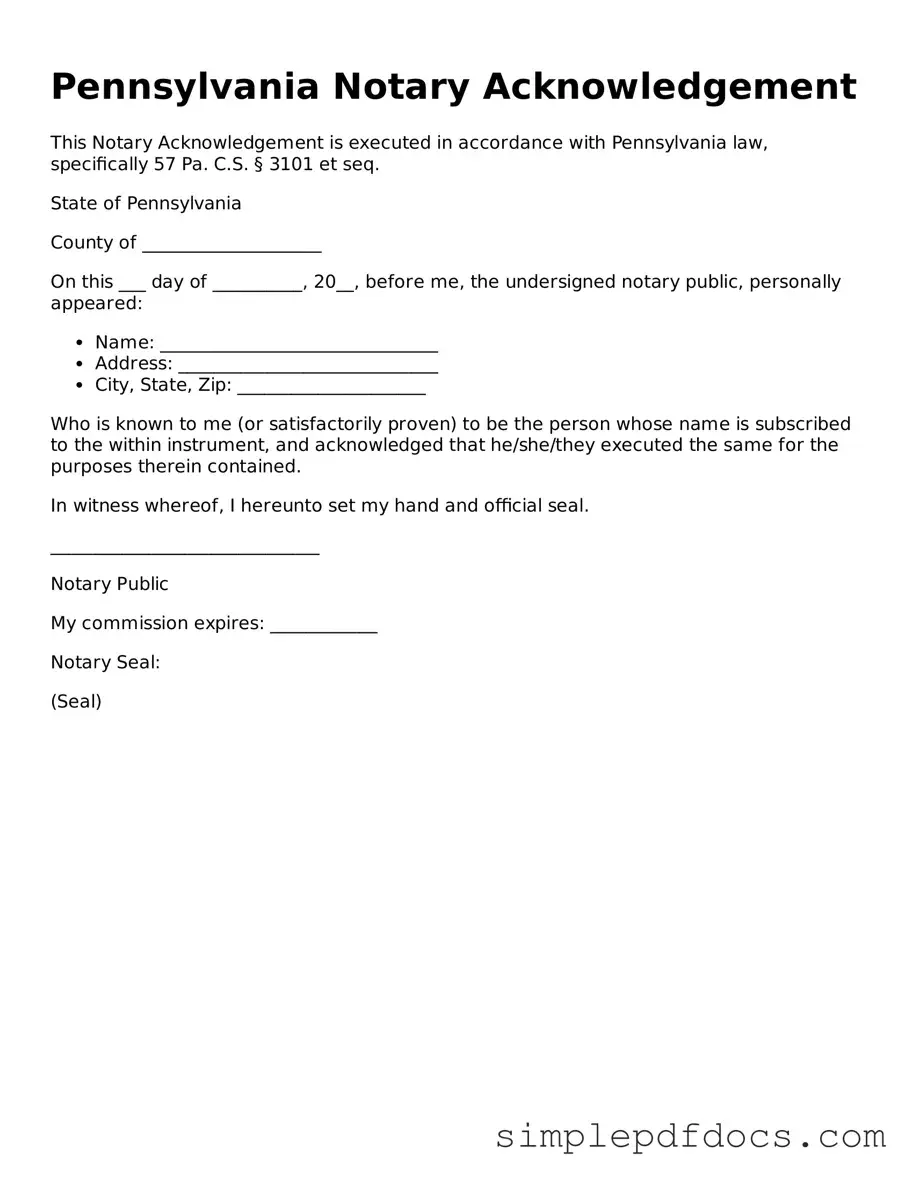In Pennsylvania, the Notary Acknowledgement form plays a crucial role in the notarization process, serving as a vital tool for establishing the authenticity of signatures on various documents. This form is essential for individuals seeking to ensure that their legal documents, such as contracts, deeds, and affidavits, are recognized as valid and trustworthy. By providing a clear framework for notaries to confirm the identity of signers, the form helps protect against fraud and misrepresentation. It includes important elements such as the notary's signature, the date of the acknowledgment, and a statement affirming that the signer appeared before the notary and acknowledged their signature. Additionally, the form may require the notary to provide their seal, further enhancing its legitimacy. Understanding the nuances of the Pennsylvania Notary Acknowledgement form is vital for anyone involved in legal transactions, as it not only facilitates the proper execution of documents but also upholds the integrity of the notarial process.
